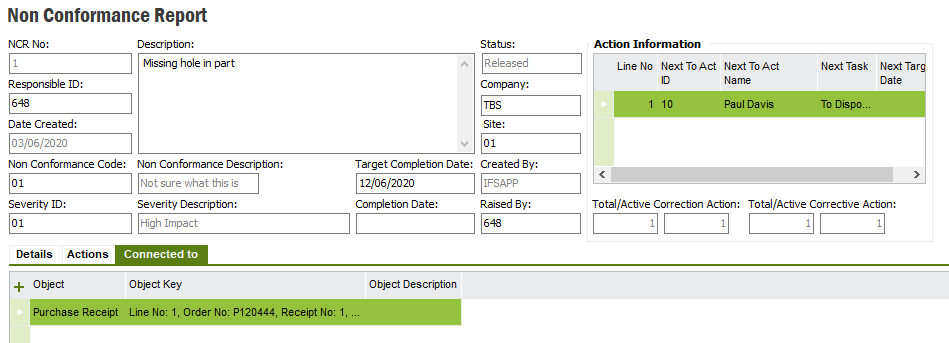I suppose correct is a bit subjective, it depends on what your quality process dictates. For us, we register the inspection results and if there is a problem, the inspector then raises an MRB case with associated Availability Controls to isolate the inventory and prevent possible use. From a manufacturing perspective, this is an important first step and then begins the process to action, correct, or dispose of the part. There are also financial transactions to deal with if there is a credit or rework associated with the return processing of the part to the vendor. All of these things don’t get dealt with from the NCR perspective. In my opinion, the NCR is a good secondary step after all of the manufacturing, inventory, and finance concerns have been dealt with as a way to formally document the problem back to the Supplier. For us, the MRB serves the purpose for most smaller and one off failures as it becomes part of the inventory processing transactions whether the failure is internal or external. It also relieves the incoming inspector from doing anything more than making a pass/fail judgement on the part. The MRB effectively escalates the problem for review by quality or engineering to determine a next action. The NCR is then reserved for either a critical failure or a systemic failure with a same part from the same supplier to formally require a response from the vendor.
I sort of view the IFS quality system as three levels:
Inspection Results - Incoming quick check, pass/fail, no detail
MRB Case - Daily processing of suspect material both internal and external, small and cosmetic failures that become part of normal daily transactions
NCRs - Systemic or critical failures that require a formal Corrective Action response from the Supplier quality system
Your setup is correct if it works for you and satisfies what your quality objectives dictate.





